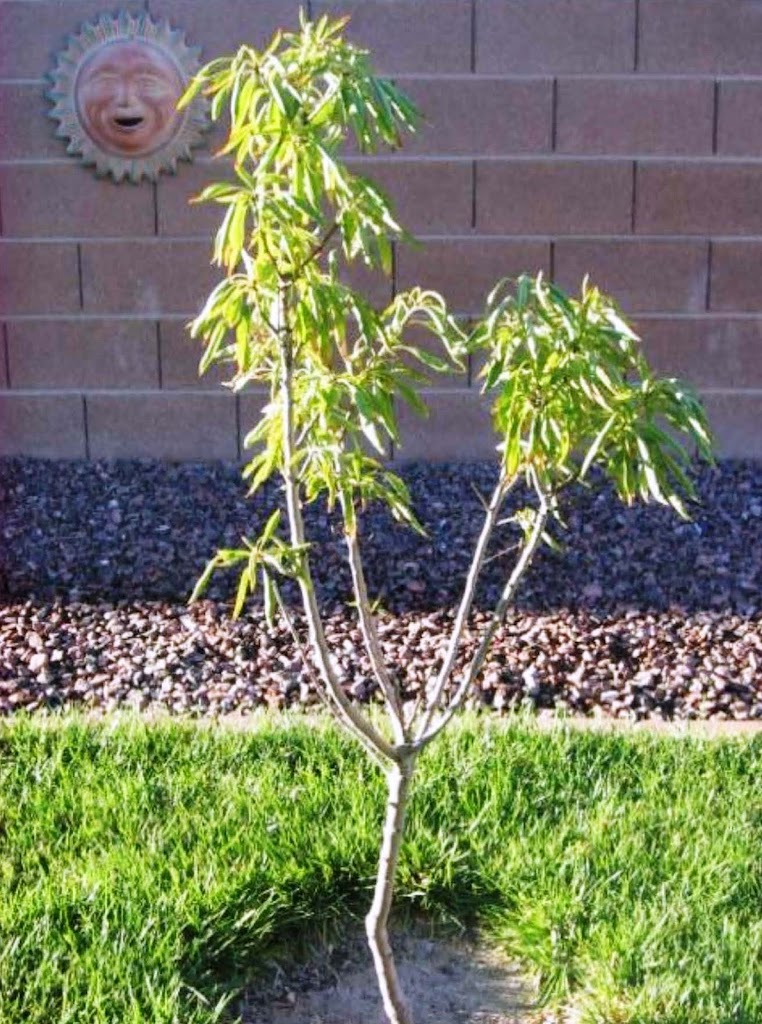Q. Our chitalpa tree underperformed last year after ten years of growth. This year (2024) it is 2/3 dead. How do I tell if it was verticillium wilt disease or bacterial leaf scorch disease that killed it? If leaf scorch, can I replace it with another Chitalpa? If verticillium wilt, what flowering tree resistant to verticillium wilt would you recommend? A. Chitalpa is a mesic hybrid between the catalpa tree and desert willow. In case you haven’t seen it, I would refer you to New Mexico State University’s fact sheet on chitalpa and bacterial leaf scorch. https://plantclinic.nmsu.edu/documents/xylella-fastidiosa-factsheet_reduced.pdf My guess is that this tree was infected, or already infected, by this bacterial disease. I would NOT replace it. I would pick a different tree other than chitalpa. Why? It is probable it would get reinfected with the same disease if it hasn’t been propagated with it. A different disease you mentioned is a widespread fungal disease called verticillium wilt. According to UCCE Sonoma County…. (Verticillium wilt is a fungal disease) caused by a soil-borne fungus that enters a plant through its roots and disrupts its vascular system. Symptoms of this disease include: With some trees they display discolored wood. This disease is less likely a problem with chitalpa. Both eventually kill the tree or at least they are infected. Verticillium wilt is a fungal disease that causes many trees to wilt rapidly. This fungus (disease) can live in wet or moist soil for long periods without showing any signs. The disease plugs the xylem, or water-conducting tissues, of the plant. In both cases, (bacterial leaf blight vs verticillium blight) whichever disease it might be is a moot point. Both diseases are lethal to the trees. The tree will eventually die and there is nothing you can apply to save it. If the tree has either of these diseases, it should be removed. I would not recommend planting a new chitalpa. That is unfortunate because chitalpa is one of the few trees that is smaller, can handle our heat and fits nicely into our small tree palette even though I put it in the “mesic” category of water use for trees. With bacterial leaf blight (more likely) it is spread by insects. It is spread by the same insect responsible for a grape and oleander diseases. Because it is primarily spread by insects, it is pressing to remove the tree in summer as soon as possible. Verticillium wilt disease (less likely) is not spread by insects, so it is less pressing to remove it asap. It is related more to wet soil and usually not spread by insects. In both cases they are always lethal and not curable. Verticillium disease resistance is less likely in small trees in the rose family, pines (gymnosperms), and palms (monocots). Since this disease is more related to wet soil, I would not plant anything in the same hole but avoid planting in the same spot. If I had to replace the tree with something in the rose family, I would find a plant for that spot that gets afternoon shade and prune it to the height needed. Smaller trees less likely to display problems in desert landscapes to verticillium wilt include: Purple leaf plum, larger boxwoods, hawthorne, many fruit trees like peaches, plums, and apricots, some of the smaller conifers, crepe myrtle, citrus, ornamental pear and pear trees, katsura tree, palms, flowering cherry, pyracantha, honeylocust, and some of the hollies. All of these trees are mesic in their water use. Don’t water them daily!
